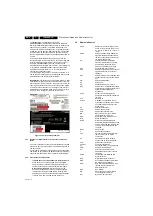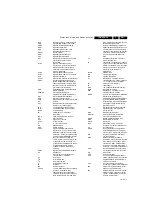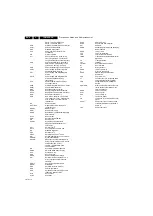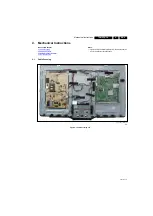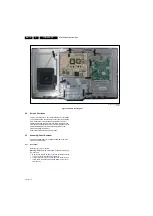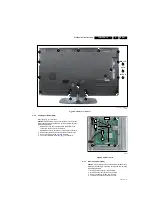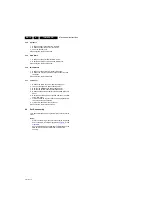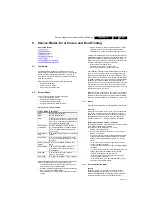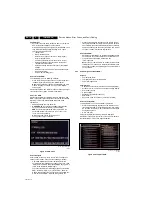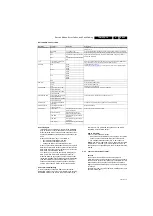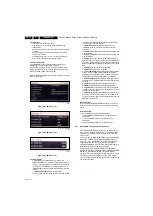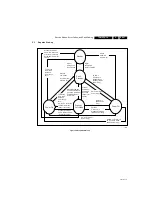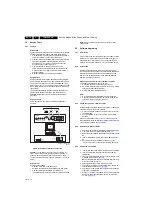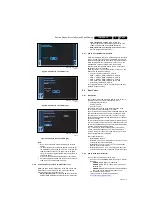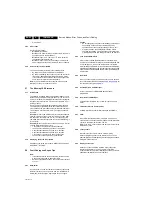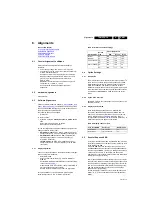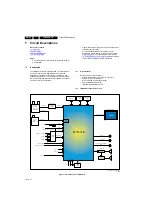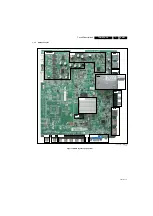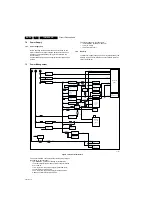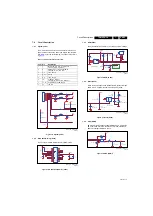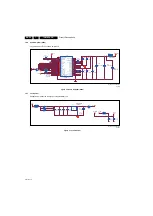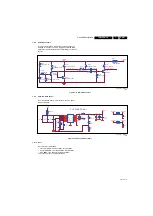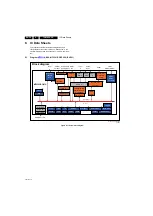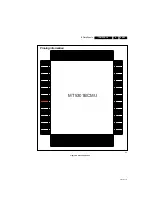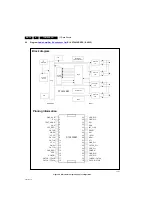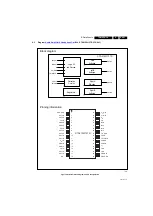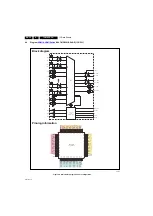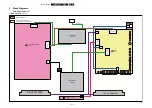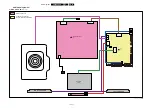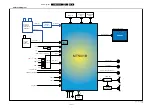
Service Modes, Error Codes, and Fault Finding
5.
•
Via ComPair.
5.6.3
Error codes
Errors code information:
•
Error 000: No problem.
•
Error 011: I
2
C bus error. When this error occurs, the TV will
not start up due to the blocked bus.
•
Error 012: Tuner error. There is no I
2
C communication
towards the tuner after start-up.
•
Error 013: Panel VCC error. This voltage is made in the
power supply and results in protection in case of absence.
5.6.4
How to Clear the Error Buffer
The error code buffer is cleared in the following cases:
•
By using the CLEAR command in the SAM menu.
•
By using the following key sequence on the remote control
transmitter: “062599” directly followed by the OK button.
•
If the contents of the error buffer have not changed for 50
hours, the error buffer resets automatically.
Note: If you exit SAM by disconnecting the mains from the
television set, the error buffer is not reset.
5.7
The Blinking LED Procedure
5.7.1
Introduction
The software is capable of identifying different kinds of errors.
Because it is possible that more than one error can occur over
time, an error buffer is available, which is capable of storing the
last five errors that occurred. This is useful if the OSD is not
working properly.
Errors can also be displayed by the blinking LED procedure.
The method is to repeatedly let the front LED pulse with as
many pulses as the error code number, followed by a period of
1.5 seconds in which the LED is “off”. Then this sequence is
repeated.
Example (1): error code 4 will result in four times the sequence
LED “on” for 0.25 seconds / LED “off” for 0.25 seconds. After
this sequence, the LED will be “off” for 1.5 seconds. Any RC
command terminates the sequence. Error code LED blinking is
in red colour.
Example (2): the content of the error buffer is “12 9 6 0 0” After
entering SDM, the following occurs.
•
1 long blink of 5 seconds to start the sequence.
•
12 short blinks followed by a pause of 1.5 seconds.
•
9 short blinks followed by a pause of 1.5 seconds.
•
6 short blinks followed by a pause of 1.5 seconds.
•
1 long blink of 1.5 seconds to finish the sequence.
•
The sequence starts again with 12 short blinks.
5.7.2
Displaying the Entire Error Buffer
Additionally, the entire error buffer is displayed when Service
Mode “SDM” is entered.
5.8
Fault Finding and Repair Tips
Note:
•
It is assumed that the components are mounted correctly
with correct values and no bad solder joints.
•
Before any fault finding actions, check if the correct options
are set.
5.8.1
NVM Editor
In some cases, it can be convenient if one directly can change
the NVM contents. This can be done with the “NVM Editor” in
SAM mode. With this option, single bytes can be changed.
Caution:
•
Do not change these, without understanding the function of
each setting, because incorrect NVM settings may
seriously hamper the correct functioning of the TV set!
•
Always write down the existing NVM settings, before
changing the settings. This will enable you to return to the
original settings, if the new settings turn out to be incorrect.
5.8.2
Load Default NVM Values
It is possible to upload the default values to the NVM with
ComPair in case the SW is changed, the NVM is replaced with
a new (empty) one, or when the NVM content is corrupted.
After replacing an EEPROM (or with a defective/no EEPROM),
default settings should be used to enable the set to start-up and
allow the Service Default Mode and Service Alignment Mode to
be accessed.
5.8.3
No Picture
When you have no picture, first make sure you have entered
the correct display code. See paragraph
the instructions. See also
.
5.8.4
Unstable Picture via HDMI input
Check (via ComPair) if HDMI EDID data is properly
programmed.
5.8.5
No Picture via HDMI input
Check whether the HDCP key is valid. This can be done in
CSM.
5.8.6
TV Will Not Start-up from Stand-by
Possible Stand-by Controller failure. Reflash the software.
5.8.7
CSM
When CSM is activated and there is a USB memory stick
connected to the TV, the software will dump the complete CSM
content to the USB memory stick. The file
(CSM_CTN name_serial no.txt) will be saved in the root of the
USB memory stick.
5.8.8
Loudspeakers
Make sure that the volume is set to minimum during
disconnecting the speakers in the ON-state of the TV. The
audio amplifier can be damaged by disconnecting the speakers
during ON-state of the set!
5.8.9
Display option code
Attention: In case the SSB is replaced, always check the
Display Code in CSM, even when picture is available.
Performance with the incorrect display option code can lead to
unwanted side-effects for certain conditions.

